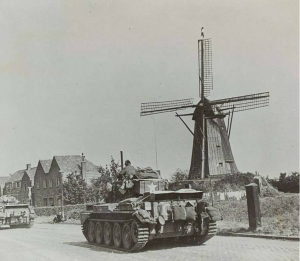Operation Market Garden was a pivotal operation during World War Two.

In the late summer of 1944, as the Allies gained a foothold in France and looked to advance deeper into Nazi-occupied Europe, the idea for Operation Market Garden was conceived. It was an audacious plan, designed to bring a swift end to the war by circumventing the heavily fortified Siegfried Line and establishing a corridor into Germany. The operation was an all-out effort involving British, American, and Polish airborne troops and ground forces.
The primary objective of Market Garden was to secure a series of key bridges in the Netherlands, specifically the bridge at Arnhem, which spanned the Rhine River. These bridges were strategically located over rivers and canals, and capturing them would enable the Allies to open a narrow path into Germany. The operation was envisaged as a coordinated effort where airborne troops would seize the bridges, and ground forces would rapidly advance to link up with them.
Challenges and Complications
However, the path to success in Operation Market Garden was fraught with challenges. Bad weather and communication issues hindered the coordination of the operation. As airborne troops landed behind enemy lines, they faced fierce German resistance. In addition, the sheer distance between the landing zones and the bridge at Arnhem proved to be a formidable obstacle.
The British 1st Airborne Division, tasked with capturing the bridge at Arnhem, encountered particularly strong opposition. The division fought valiantly but was ultimately unable to hold the bridge for the expected two days, with the battle extending for over a week. This delay in capturing the bridge at Arnhem had severe repercussions.
The Legacy of Operation Market Garden
Operation Market Garden did not achieve its primary objectives. While some bridges were successfully captured, the corridor wasn’t fully opened, and the plan to create a rapid path into Germany faltered. The operation’s shortcomings, coupled with the heroic but tragic stand at Arnhem, have solidified Market Garden’s place in history.
Market Garden’s significance extends beyond its immediate objectives. It served as a learning experience for future operations, highlighting the importance of factors like effective intelligence, communication, and logistics. Lessons from the operation were incorporated into later Allied campaigns, including the planning for the D-Day landings in Normandy and the successful crossing of the Rhine in 1945.
Remembering Market Garden
Today, Operation Market Garden is remembered as a symbol of both audacious ambition and the harsh realities of war. The sacrifices made by the soldiers who participated in the operation, especially those who fought in the streets of Arnhem, are commemorated annually in the Netherlands. The “John Frost Bridge” in Arnhem is named after the British commander who valiantly defended the bridge.
Operation Market Garden also played a role in shaping the post-war landscape. The failure to swiftly open a path into Germany led to a more protracted conflict, affecting the course of history and the division of post-war Europe.
In conclusion, Operation Market Garden was a bold and ambitious undertaking during World War II, marked by its audacious goals and the heroism of those who participated. Though it fell short of its primary objectives, the lessons learned from the operation left a lasting impact on military strategy and planning. Operation Market Garden is a testament to the resilience and sacrifice of those who fought, and a reminder of the complexities and challenges faced in the pursuit of victory during wartime.
Cite This Article
"Operation Market Garden: What Exactly Was It?" History on the Net© 2000-2024, Salem Media.
April 29, 2024 <https://www.historyonthenet.com/market-garden-what-exactly-was-the-infamous-operation>
More Citation Information.





